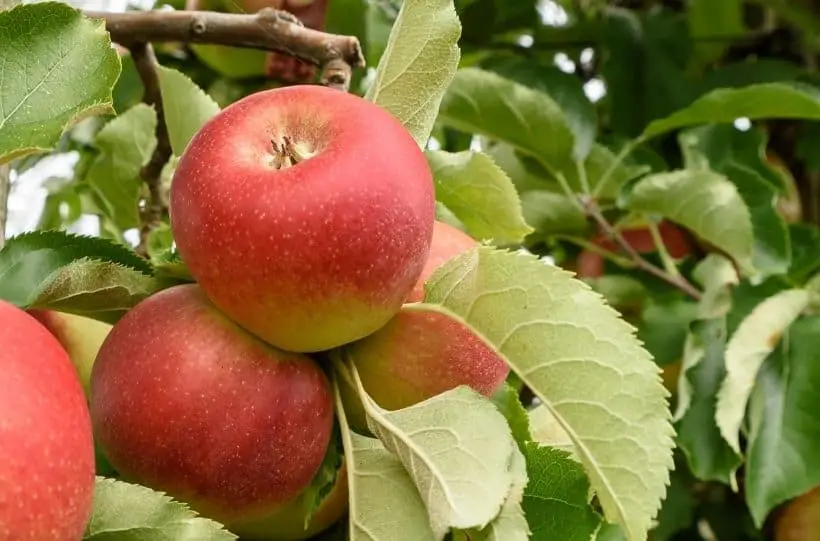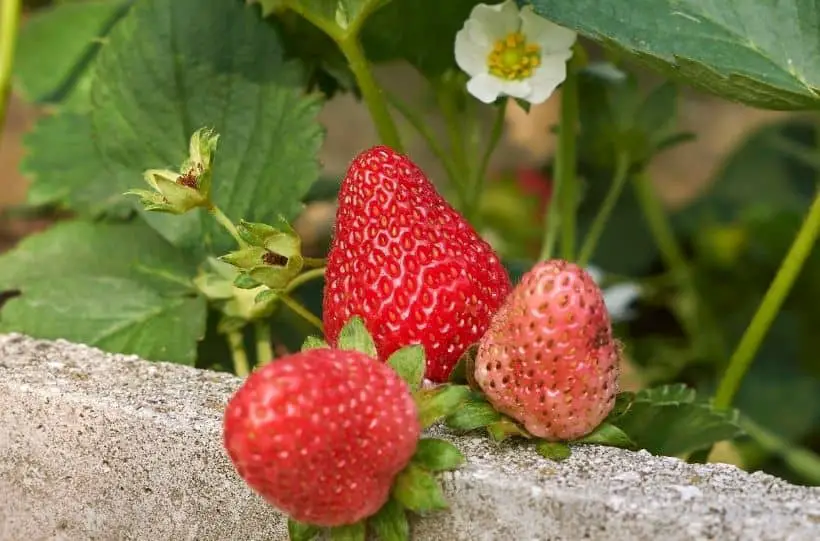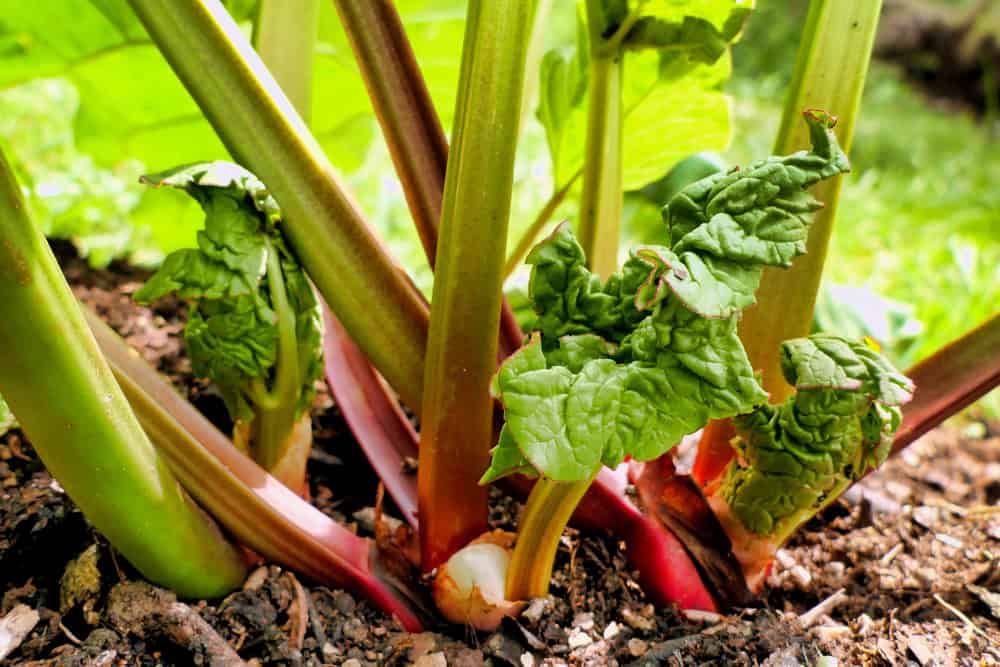5 Best Fruits to Plant in Fall for a Delicious Harvest Next Year
This post may contain affiliate links. Please see the privacy policy for details.
Fall is the perfect time to tidy up the garden, prepare your beds for winter, and take care of lingering summer crops. But it’s also one of the best seasons to get a head start on next year’s harvest by planting fruits that thrive when planted in autumn.

Dedicating time to plant new crops before the first frost of winter will set you up with a good harvest next year, potentially as early as Spring.
Now is the perfect time to plant fall-friendly fruits like apples, pears, berries, and more. These plants settle well in cooler weather, and with a bit of winter protection, they’ll reward you with an earlier harvest next spring.
Make sure to keep reading to see exactly which fall fruits to grow in preparation for next year’s harvest.
Apples

Apples are an absolute staple, particularly in colder climates. They are versatile and can be eaten fresh or used to produce a huge range of dishes in the kitchen, from apple pies and tarts to apple sauce or added to meat dishes.
Apple trees are best planted in mid-fall as bare rootstock. Growing apple trees from seeds lead to an unpredictable quality of apple. Rootstocks are controlled and guarantee a specific variety of apples from the rootstock you have selected.
When planting your apple tree, consider the variety you are growing and whether you prefer to grow it in a container or directly outside. Consider choosing disease-resistant varieties if you’re a beginner. Dwarf varieties may be best if selecting a container due to their smaller size and less space required.
But for all varieties, plant them between October and December when the ground is not hard or too dry.
Apple trees grow best when in full sunlight and with moist soil, so regular watering will be needed to settle the rootstock during the summer months. As the rootstock is unable to stand upright on its own, you will need to use a tree stake when planting to help position your apple tree.
Your apple tree needs time to establish and grow, so do not expect it to produce fruit within the first year. For dwarf varieties, it can take 2 years until they begin to bear fruit, but for larger-sized trees, it can take up to 8 years.
Strawberries

There is nothing quite like being able to pick your own strawberries from the garden and eat them right away.
Generally, strawberries can be planted throughout the year from Spring to the end of Autumn. But for fruits earlier in the year, fall planting helps them establish strong roots before spring.
The great news is that strawberries can be grown almost anywhere: in pots, directly in the ground, or even within hanging baskets. The key to delicious strawberries is planting them where they will receive full sunlight. Access to sunlight helps generate sweeter-tasting strawberries.
Another core reason to plant strawberry plants in the fall is that they require a cold spell for the flowers and fruit to develop. Planting before winter offers them said cold weather ready for them to begin flowering in spring.
Planting in autumn will also help your strawberry plants avoid the full heat of summer, where they are susceptible to drying out and wilting.
Elderberries
Although the berries can be quite tart themselves, elderberries have many uses and can be turned into juices, jams, tarts, and more. (Be sure not to eat raw elderberries, as they can be toxic until cooked.)
Similar to strawberries, elderberries can be planted throughout the year, except during the summer months when they produce flowers.
Elderberry trees are highly tolerant of many conditions and aren’t too fussy in terms of soil conditions or the amount of sunlight they receive. The key element of a successful elderberry tree is to ensure it receives enough water and doesn’t dry out.
Elderberries do well grown from root whips in the Autumn. For best results, try to plant more than one tree within proximity of each other, preferably of different varieties, for better pollination. This will aid cross-pollination, leading to a higher fruit yield.
These fruit bushes do require mulching around the base to prevent weed growth and competition for space. It is also recommended not to pick the berries within the first year.
From the second year onwards, your elderberry tree will be much more established, produce a larger supply of berries, and won’t fall into shock from pruning.
Pears

The time of year to grow a pear tree varies depending on how you choose to start your tree in your garden. If using a bare root, they are best planted at the end of Autumn when the pear trees are dormant. Whereas simply potting a small tree can be planted over the winter months.
Though dormant over the winter months, pear trees will still need protection from the frost. Make sure to select an area of your garden that is in full sunlight and is sheltered from harsh weather. You can also add mulch over the winter to the base of your tree to protect the roots, and wrap the tree in horticultural fleece if you live in a particularly cold area.
With this fall fruit, it is best to make space for at least two pear trees. Similar to elderberry bushes, pear trees rely on cross-pollination for fruits to develop. Popular varieties for fall planting include ‘Conference’ and ‘Bartlett.’
Unlike the elderberry bush, pear trees require regular pruning to keep them healthy. Pruning is needed over the winter to check the tree’s overall health and remove any branches that are diseased or dead. Over the summer months, pruning can help to provide better air circulation and space for fruit to develop.
Rhubarb

Rhubarb is technically a vegetable, but it is commonly used as a fruit in cooking, which is actually grown for its stalks rather than the fruit itself. These tart stalks are often used in pies, jams, and other desserts.
The best time to plant rhubarb is when the plants are dormant in the fall. They require full sunlight and well-draining soil, as they do not like being waterlogged. Ensure that you give enough space between each plant to allow for air circulation and prevent diseases.
While rhubarb plants do not require regular pruning, it is essential to remove any flower stalks that develop in the summer to ensure that energy is focused on producing new stalks rather than seeds.
Rhubarb can take a few years to become established before it can be harvested. Once established, the stalks can be picked throughout the growing season, but it is recommended to stop harvesting in late summer to allow the plants to store energy for next year’s growth.
Each of these crops is an excellent choice for fall fruits to grow. They offer a burst of color with their flowers in spring and summer, and delicious fruits towards the end of summer and early fall.
These five fall fruits not only bring beauty to your garden in spring and summer, but also provide a delicious harvest for making jams, tarts, juices, and more. They’re surprisingly easy to grow and can set you up for a productive garden next year.
For more tips on growing fruit in your garden, take a look at these posts:
